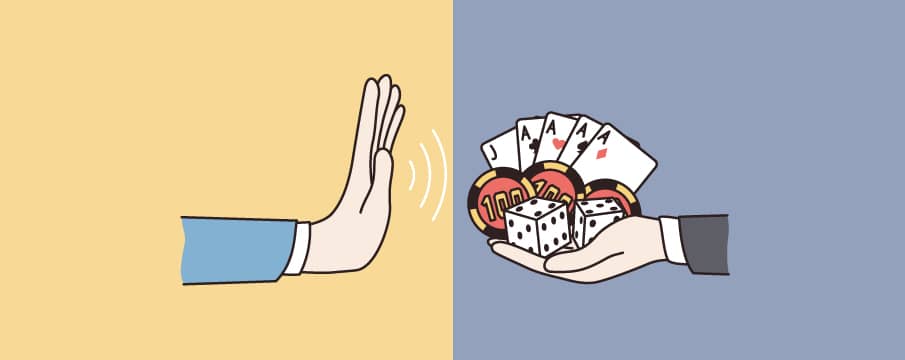- Home
- Best Omaha Poker Strategy Tips That Work In 2025
Best Omaha Poker Strategy Tips That Work In 2025

Omaha is one of the best versions of poker, and today, we take a look at the best Pot Limit Omaha strategies available. Even the best stratagem consists of many integral parts that account for most situations, such as the difference between playing a winning hand and miscalculating your position.
That is why Omaha poker is a game of skill, intuition, and perhaps some degree of luck. However, a great strategy will quickly teach you that the luck of the draw can be eliminated easily if you choose to follow all time-tested PLO practices.
Pot Limit is easily the most popular iteration of Omaha, and as such, we will focus a lot on today’s coverage on how to play at such tables better. We will look at what starting hands make the most sense and what hand combinations will influence your game for the better. In this guide, we will naturally touch on the Hi-Lo Omaha strategy, the other popular version of the game.
Omaha PLO Rules: A Crash Course for Beginners
Omaha is a game that takes skill and learning, and as such, it has a strong following in the poker community, whether you play PLO or Hi-Lo. The game is played with a 52-card deck much like Texas Hold’em, but unlike Hold’em, the Pre-Flop stage comes with four hole cards, that is, cards that only you can see. You can have anything from 2 to 10 players in a game of Omaha.
Because you have so many starting cards in Omaha, the action usually elicits a lot more betting with players more inclined to Call, Raise or Fold right from the early rounds and usually not care too much about the position. The game progress in the familiar stages with:
- Pre-Flop – The blinds place their bets, and four hole cards are distributed to players to everyone at the table. Players can decide whether to call, raise, or fold.
- The Flop – The dealer places the first three community cards, and players continue to bet as they think is best.
- The Turn – The turn will bring another card to the community pool and allows players to continue making decisions.
- The River – Last, you have the river where you will see the last community cards. Once again, you will use your four cards and the community five cards to make the best five-card hand.
- The Showdown – If players still stand after the river, all hands are revealed, and the player with the best hand wins the pot.
Each game stage advances the action and reveals more information about what your opponents may be holding. A game of Omaha concludes with the player who has the strongest hands collecting the pot, and this may happen either during the showdown or before if other players decide that their hands aren’t strong enough to continue.
Omaha PLO Poker Strategy: Tips to Play By
Every game of poker will feel a little different. While the same core strategy applies across most versions of the game, it’s always good to have a stratagem that has been tailored for each iteration of the game. With this in mind, we have prepared some proven and time-tested strategies that will help you advance your Omaha game and appear as a much stronger opponent at PLO tables.
#1 Make Sure to Pick Your Starting Hand Carefully
Omaha offers quite a bit of breadth when you start playing PLO. With four cards comprising your starting hand, you have numerous options. However, how you act in this opening salvo of betting will pretty much determine what your chances of winning later on are. You need to curate your hands carefully and stick with those worth playing through.
#2 Pick the Best Tables
You don’t want to sit at every table. Part of a successful Omaha PLO strategy is to know which tables are more accommodating. In other words, you are looking for slightly weaker opponents where you can play with a steady hand and win a significant percentage of the games. That is not to say that you should avoid equally-matched or even better opponents, but generally, most players will try to focus on the “fish.”
#3 Raise or Fold, Don’t Call
While you may often be tempted to call a bet, you will notice that most successful players in Omaha poker tend to either raise or fold. The logic here is that you will probably want to raise and make the most out of that if you have a strong hand. Others may also increase their bets and contribute to the pot, putting you in a better position to collect fatter winnings. Calling means that you are not confident enough in your hand, and you may as well fold as it will save you some trouble down the road.
#4 Be Mindful of Big Raises and Bets
While Omaha is a version where much information is already revealed, not many players bluff, although bluffing is naturally a part of the experience. However, a big increase or bet usually means that your opponent has good starting hands to act on. There is the possibility of your opponent bluffing, but that is seldom the case.
#5 Pursue Strong Drawing Hands
A draw in poker is a situation where your starting hand may not be worth much, but it may be easy to add up to a straight or even flush draw, or any other impactful combination. A straight may have as many as 20 outs in Omaha, which gives you a very good chance of actually getting the cards you would need to complete your hand. This doesn’t mean to base your entire Pot Limit Omaha strategy on this, but it helps.
#6 Aces Don’t Hold Much Value
Most players will try to have their hands improved with each of the next stages of Omaha. So, if you have a pair of unsuited Aces in the pre-flop, this is not saying much because your chances to statistically improve your hand diminish because of the four hole cards already in play. Be mindful of your Aces, and don’t be misled by what you have learned in Texas Hold’em.
#7 Avoid Limping
As explained, limping is generally considered a sign of weakness because most opponents will see that your hand is not strong enough to afford to raise. Of course, there is another side to limping, too – bluffing. Trying to stay unpredictable would generally mean that your opponents will be confused for a while, but they are likely to catch up.
It’s important not to bluff-limp with a weaker hand because this will have negative ramifications for you in the long term. There are certain hands, though, that you can limp with, including A-Q-x-x or all four-in-a-row-combinations.
#8 Know the Good Starting Hands
There are 16,432 possible combinations you can go for with the four cards you have in your hand and the community ones. As such, you can see how probability plays a huge role in how any Hi-Lo or Pot-Limit Omaha game unfolds. That is why most players focus on understanding what the strong hands in Omaha are. An example would be all top 30 cards that have at least one suite.
#9 Not Getting Much Out of the Pot
Just because you have an A-2 in an early position doesn’t mean that you should always raise. We know this goes against the grain of what we just said, but having a strong opening hand means that you should try and get more people to contribute to the pot.
If you have a great opener but waste it by scaring too many people early on, you may end up collecting slim pickings. Rather, you should focus on withholding big bets and only raising after opponents have contributed to the pot to merit a stronger response from you.
#10 Understanding Your Position
As a follow-up from #9, you ought to understand that position still plays an important role in Omaha. The reason why is that you don’t want to scare players right away, and you want to take care of the pot so that it yields the best dividends. You will also be able to collect a lot of additional information that will help you control your hands and make better-informed decisions.
Omaha Hi-Lo Strategy: Basic Advice and Tips
Another very popular variation of Omaha is Hi-Lo (O8). Much of the strategy advice already shared for PLO will readily apply here as the game’s logic is very much the same. The difference here is that you compete for the Low and High parts of the pot, which can be a little confusing at first, but you will find the experience fairly straightforward. What matters is winning, of course. Playing the right hands to their best value is what you should be gunning for.
Just like in PLO, you should follow some basic advice, such as not playing too many hands or calling when your hands don’t add up to much. If you get a nut hand, such as A-deuce, you are already looking at a strong opening, but remember that your goal in O8 is to get the most out of the pot because nut hands may be somewhat difficult to get a hold of.
A pair of Aces sounds good in Hi-Lo, but you ought to consider what the hands you have been. Also, you should be keeping an eye out for the so-called blocker cards. These are cards that will make it less likely for your opponent to be holding a stronger hand.
As with every good Omaha poker strategy, you ought to leave some margin for error. No one stratagem will provide you with a sure-fire to winning, but one thing that may work is clocking in enough hours. Remember, you don’t always have to play against weaker or stronger players, but you will generally want to balance.
A Final Word on Omaha Poker Strategy
Omaha is a game where you will constantly be learning new things, and as such, you can expect your strategy to need adjustment. Player styles and even the “meta” change all the time, so you can’t expect things to stay the same.
As a community, Omaha poker players tend to change the paradigms, and if you step away from the game for a year or so, you may come to slightly different poker games that rely on slightly different plays. As long as you keep learning, though, you will find yourself in a strong position no matter at which table you sit.
FAQ
No. The truth is that while there are strong and proven practices, you won’t be able to find a single strategy that works every time. It’s best to take everything in stride and adapt.
Yes. Bluffing is a part of Omaha, but as you can imagine, the game offers a little less room for it because each player has four hole cards.
That depends. Omaha Hi-Lo and PLO share fairly the same starter hands. However, it’s best to reference the Omaha hands cheat sheet to inform yourself.
That depends. Omaha Hi-Lo and PLO share fairly the same starter hands. However, it’s best to reference the Omaha hands cheat sheet to inform yourself.
Yes, Omaha PLO is the second most popular poker variant after Texas Hold’em. As such, you can expect a busy tournament scene.
After finishing her master's in publishing and writing, Melanie began her career as an online editor for a large gaming blog and has now transitioned over towards the iGaming industry. She helps to ensure that our news pieces are written to the highest standard possible under the guidance of senior management.















